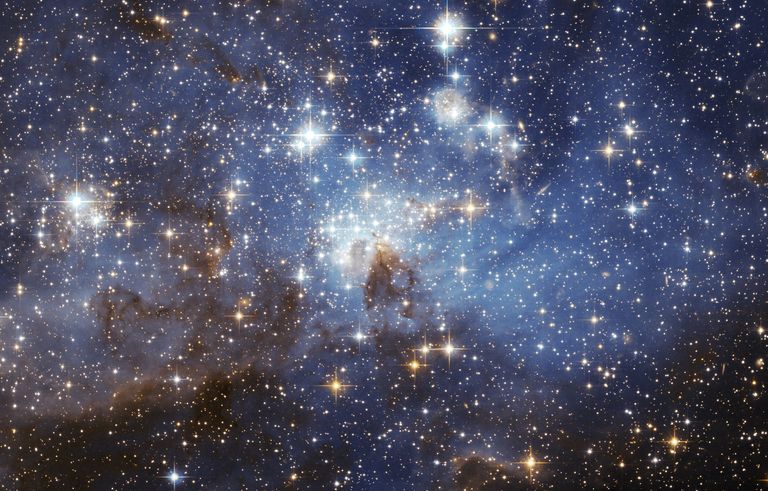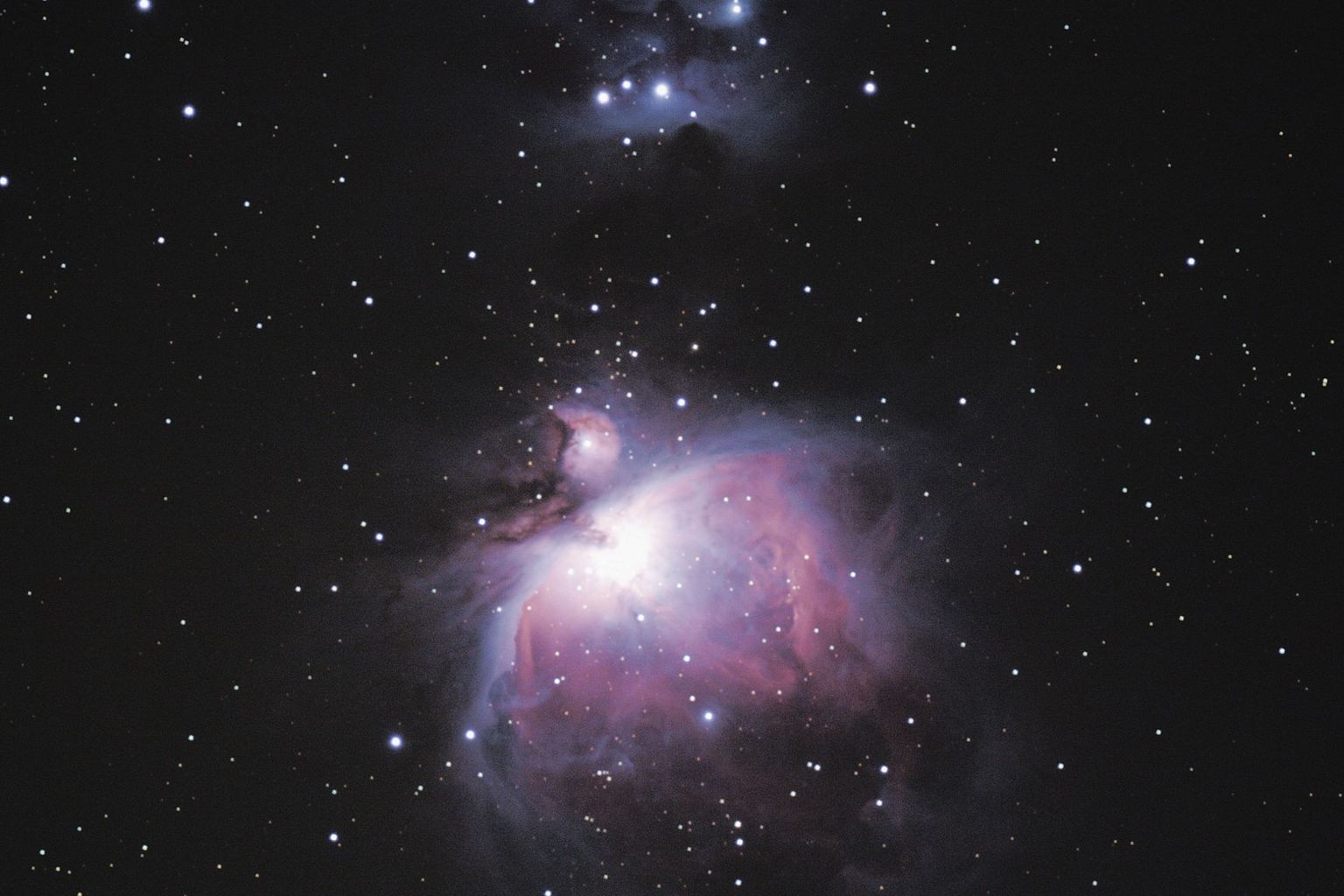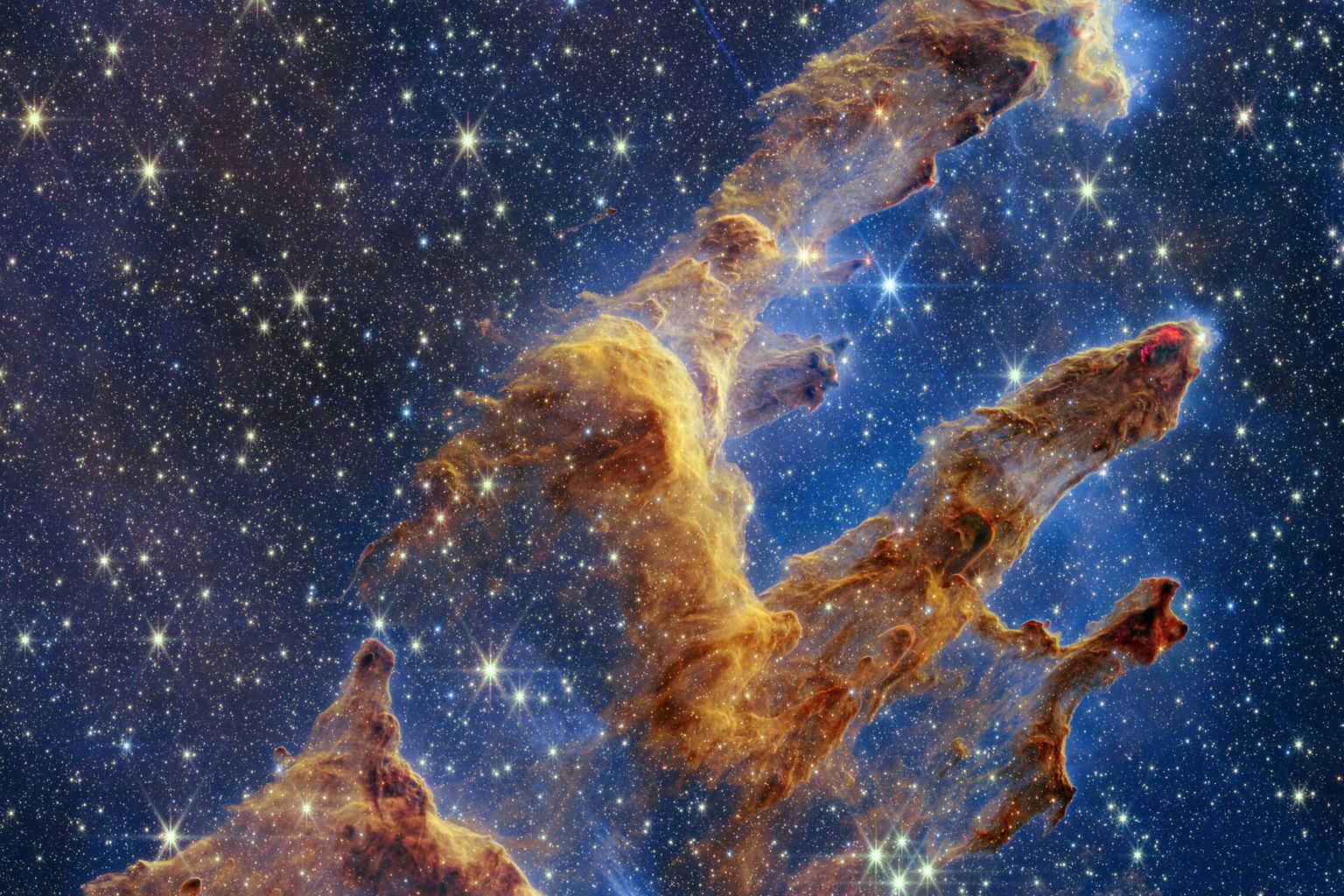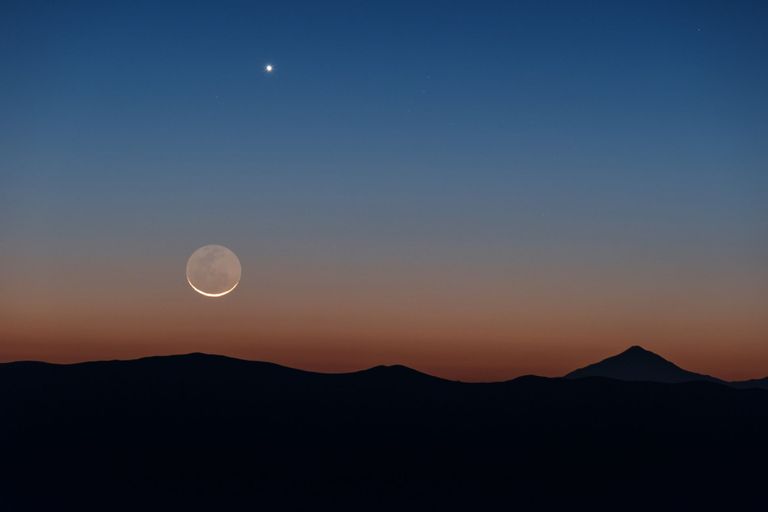Stars

Basically, a star is a gas sphere which initially consists predominantly of hydrogen and helium. Due to its colossal dimensions, the gas sphere acts as a gigantic generating plant and a birthplace for most of the chemical elements in the Universe.
A star experiences a strong compression force generated by its own gravity. Therefore, the temperature and pressure in its inner core are high enough to initiate nuclear reactions. In a star new elements are built trough nuclear fusion: For example, out of four hydrogen nuclei a single helium nucleus is formed. However, the new helium nucleus is a tiny bit lighter than was its starting material. The mass difference is freed in form of energy, transported outwards trough the stars layers and radiated away. The vital sunrays of our home star have been produced in just this way. While a star gains its energy by the fusion of light nuclei, the opposite mechanism powers an atomic power plant, where heavy nuclei are fissioned.
The newly formed helium in the star can be further fused, so that, little by little, heavier elements are built; carbon, oxygen, magnesium, silicon, iron and others are the products of these processes.
Some of the stars explode as a supernova at the end of their lives. In this violent act the stars material is ejected into outer space from where it can be used to form new star generations, planets or living things. All elements heavier than helium have once been fabricated in a star. As a matter of fact, we and everything around us consist of star dust.




